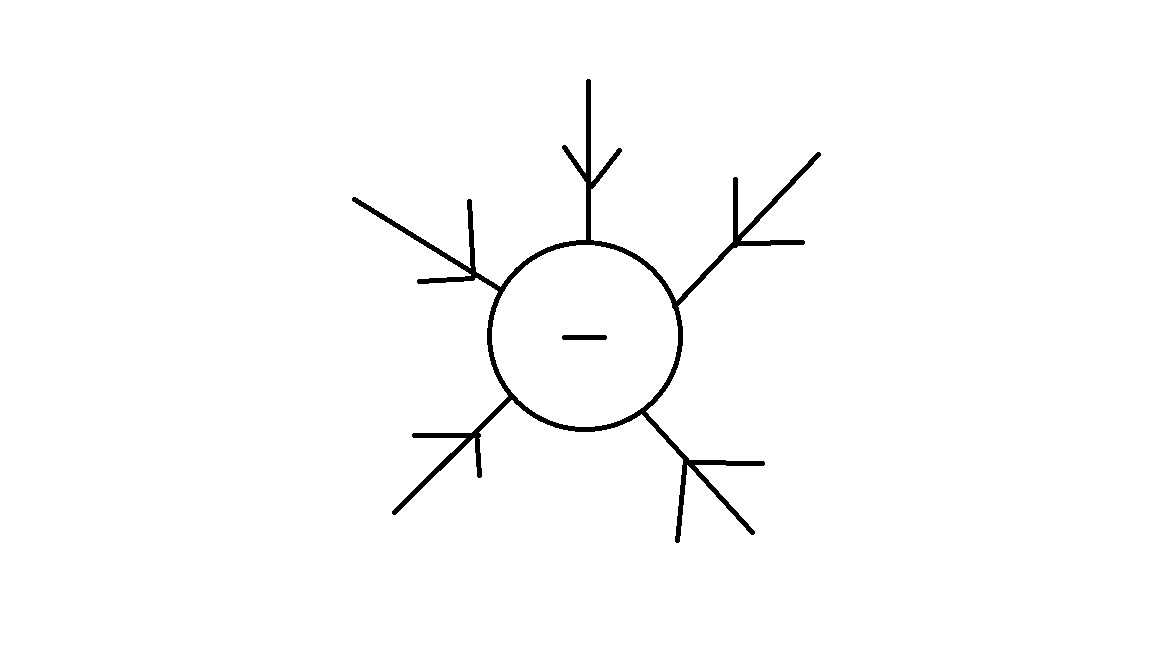Electric field: Difference between revisions
| Line 63: | Line 63: | ||
==Connectedness== | ==Connectedness== | ||
The electric field is made up. It's a lie. It's a concept that an English intellectual by the name of Michael Faraday made up centuries ago to think about the universe in a different way. But it this concept that is Faraday's greatest gift to the world. The electric field allows us to think about point charges, charge distributions, and current. It allows us to better understand electricity, a concept that would go on to spur some of the greatest inventions of the entire history of humankind. And now, with advances in areas like quantum computing and bioengineering where circuits are regularly employed to push the boundaries of science and engineering, we have Michael Faraday to thank. Devices that save lives or improve their quality, such as neuroprosthetics or pacemakers, rely on the principles theorized by Faraday long ago. | |||
==History== | ==History== | ||
Revision as of 10:49, 17 April 2016
Electric field
The electric field created by a charge is present throughout space at all times, whether or not there is another charge around to feel its effects. The electric field created by a charge penetrates through matter. The field permeates the neighboring space, biding its time until it can affect anything brought into its space of interaction.
The Main Idea
To be exact, the definition of the Electric Field is as follows:
The electric field is a region around a charged particle or object within which a force would be exerted on other objects.
If we put a charged particle at a location and it experiences a force, it would be logical to assume that there is something present that is interacting with the particle. This "virtual force" is in essence the electric field.
A Mathematical Model
The electric field can be expressed mathematically as follows:
[math]\displaystyle{ {\vec{F_{net}} = 0 \Leftrightarrow \frac{d\vec{v}}{dt}} = 0 }[/math]
[math]\displaystyle{ {\vec{F_{2}} = {q_{1}}{\vec{E_{1}}} \Leftrightarrow \frac{d\vec{v}}{dt}} }[/math]
which can be translated to postulate that the force on particle 2 is determined by the charge of particle 2 and the electric field.
Examples
The following examples are to test your basic understanding of the Electric Field. For more examples that test your knowledge of all three of the laws, peruse the class textbook.
Simple
Which way is the electric field going for a negatively charged particle?
It's easy to see that the electric field is pointing toward the negatively charged particle. The electric field is tending toward the negatively charged particle.
Middling
Two charged objects are separated by a distance d. The first charge is larger in magnitude than the second charge:
A) The first charge exerts a larger force on the second charge.
B) The second charge exerts a larger force on the first charge.
C) The charges exert forces on each other that are equal in magnitude and opposite in direction.
D) The charges exert forces on each other equal in magnitude and pointing in the same direction.
The answer is of course C, which can be reasoned even by an extension of Newton's Third Law. Using the simple equation in this page, it is also possible to derive and reason this result. Notice that the forces are opposite in direction! The equations above relate vectors, an important concept on physics.
Difficult
The number of electric field lines passing through a unit cross sectional area is indicative of:
A)field direction
B)charge density
C)field strength
D)charge motion
E)rate of energy transfer
The answer is C, since the number of electric field lines through area is how field strength can be qualitatively and quantitatively determined.
Connectedness
The electric field is made up. It's a lie. It's a concept that an English intellectual by the name of Michael Faraday made up centuries ago to think about the universe in a different way. But it this concept that is Faraday's greatest gift to the world. The electric field allows us to think about point charges, charge distributions, and current. It allows us to better understand electricity, a concept that would go on to spur some of the greatest inventions of the entire history of humankind. And now, with advances in areas like quantum computing and bioengineering where circuits are regularly employed to push the boundaries of science and engineering, we have Michael Faraday to thank. Devices that save lives or improve their quality, such as neuroprosthetics or pacemakers, rely on the principles theorized by Faraday long ago.
History
While Galileo is the one credited with the idea of inertia motion, it was René Descartes, a French philosopher, who would expand upon Galileo's ideas. Descartes went on to propose three fundamental laws of nature in his book, Principles of Philosophy, the first of which stated that "each thing, as far as is in its power, always remains in the same state; and that consequently, when it is once moved, it always continues to move." Thus, while the concept of inertia is often referred to as Newton's First Law, it was first described by Galileo and then perfected by Descartes decades before Newton published his findings.
As for Newton, he first described his three laws of motion in The Mathematical Principle of Natural Philosophy, for the Principia, which was published in 1687. These laws described the relationship between an object and the forces acting upon it and laid the foundation for classical mechanics. While Newton's first law came from the work of Descartes and Galileo, his other laws are the work of himself.
